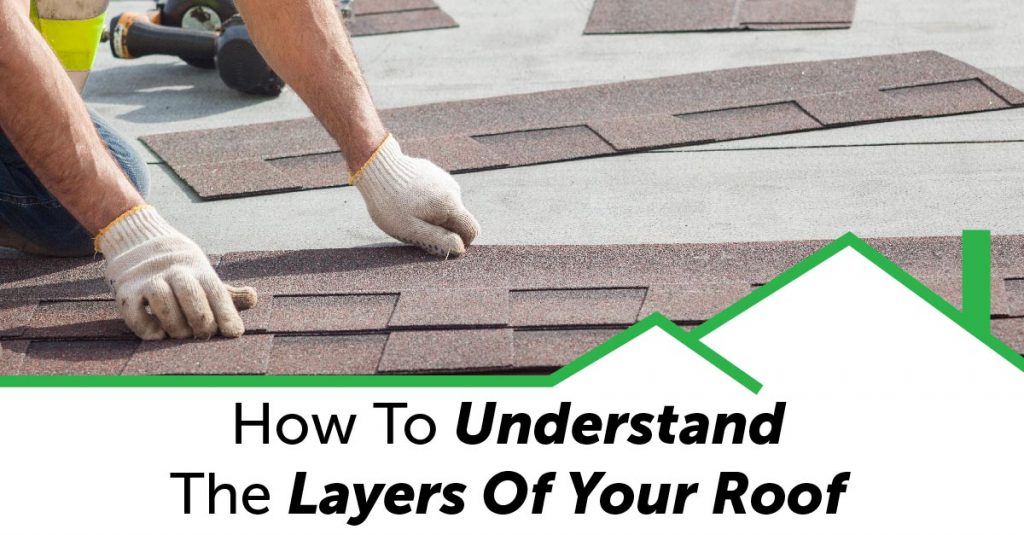Some roofing contractors often prefer to keep their customers in the dark with regards to the many layers which make up a solid, reliable roof. However, reputable roofers will be very transparent about their roofing products and the processes they use to install, repair, or replace roofs. So, today we dive into the anatomy of your roofing system and clarify some common terms you’ll hear when working on a roof installation, replacement, or repair project.
Insulation
Insulation is what keeps your home energy-efficient under extreme weather conditions. If you have a warm roof, then the insulation is installed directly under the roof to help reduce heat loss. Cold roofs, on the other hand, have the insulation installed above the ceiling of the topmost floor of the house.
Ventilation
A roof ventilation system helps to provide a continual flow of air around the attic space. It typically removes overheated air and moisture from the roof system and attic space, which minimizes the impact of fluctuating temperature and moisture levels inside and outside your home.
Roof Deck
The deck is the part of your roof onto which every other roofing component is installed. It is the material between the structural components of the roof (joists and trusses) and the insulation and weatherproofing layers (the roofing materials, coatings, etc.). The roof deck needs to be made of strong and durable material such as wood to ensure it withstands the weight of the roofing materials.
Water Shield
The water shield or ice shield is a self-adhering waterproofing membrane roofers use to help prevent damages emanating from ice dams and wind driven rain. There are three common uses for ice and water shield. On eaves and rakes, ice and water shield is used to protect the decking and interior components of the roof from moisture damage. In valleys, it protects shingles from hail damage or foot traffic. Water and ice shield is also used around flashings and chimneys to protect against wind-driven rain or moisture coming from sections where water is slowed down and allowed to back up.
Underlayment
Roofing underlayment is a water-resistant material installed directly onto the roof deck. It lies under all other roofing materials and works to provide an added layer of protection from extreme weather.
There are three common types of roof underlayments:
- Asphalt-saturated felt
- Rubberized asphalt
- Non-bitumen synthetic, also known as “synthetic underlayment.”
Typically, asphalt-saturated felt and synthetic underlayment options are water-resistant while rubberized asphalt underlayment systems are waterproof.
Ridge Vent
A ridge vent is usually installed at the peak of a sloped/pitched roof to allow warm, humid air to escape the attic space. Your house needs to release all the hot air built up in the attic. It is crucial for the heat to be effectively expelled from the house to prevent excessive moisture accumulation and mold growth. Without a ridge vent, the warm, humid air in the attic space will trigger problems such as a hotter roof leading to premature deterioration of shingles. Ridge vents are mostly used on shingled residential properties.
Roofing Material
Whether you’re investing in a new roof on a new home or replacing an old one, there are many options to consider in terms of the roofing material. Some common options include asphalt shingles, metal, slate, and tile. Several factors will determine what type of roofing material is best for your home, including the type of roof, the slope/pitch, the complexity of the design, the style of the house, as well as your local climate. Working with a trusted, local roofing contractor will help weigh the available options and choose what works best for your property.
Flashing
Roof flashing refers to the strips of metal, usually made of galvanized steel, used to direct water away from important areas of the roof. Typically, flashing is installed everywhere the roof plane intersects a vertical surface such as walls or dormers. Flashing is also installed to surround various roof features, such as chimneys, vents, and skylights.
It’s important to always work with a reputable roofing contractor who understands your locality and the weather your roof is constantly exposed to. At O’LYN Roofing in Norwood, MA, you can rest assured you’ll have the best roofing system in no time! We provide quality roofing services, including roof installation, repair, and replacement. Contact us today for a free estimate or to learn more about our roofing products and services.



